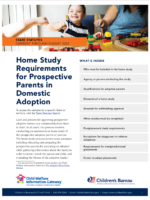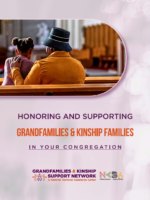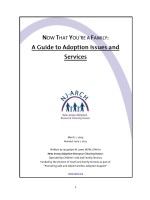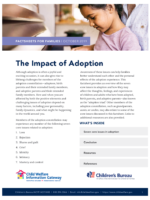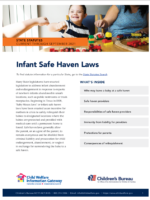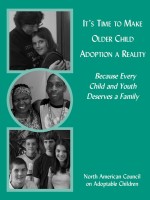Home Study Requirements for Prospective Parents in Domestic Adoption
Honoring and Supporting Grandfamilies and Kinship Families in Your Congregation
How to Adopt in New Jersey: A Roadmap to Family Building
NJ ARCH has created a useful handbook to help you with your adoptionneeds. This easy-to-read 34-page handbook covers issues in adoption including: lifelong adoption, behavioral and developmental needs, and adoption resources. To view and print an electronic, PDF version of this handbook, please click on the handbook cover to the left. If you would like to request… [read more]
How to Make Adoption an Affordable Option
This booklet covers expenses common to most adoptions, expenses unique to the various types of adoption, financial assistance for adoption and post-adoption expenses, and tax breaks available to adoptive parents.
Impact of Adoption on Adoptive Parents
Impact of Adoption on Birth Parents
This fact sheet discusses some of the emotional issues that parents may face after making the decision to place an infant for adoption, in surrendering the child, and in handling the feelings that often persist afterwards. It may be a helpful resource for birth parents as well as family members, friends, and others who want… [read more]
In Loving Arms
In Loving Arms Most babies, children and youth have traumatic experiences before going to live with their grandparents, aunts, uncles or other relatives in grandfamilies. More than half of children involved with the child welfare system have experienced at least four adverse childhood experiences (ACEs), leaving them 12 times more likely to have negative health outcomes than… [read more]
Infant Safe Haven Laws
Intercountry Adoption: Where Do I Start?
It’s Time to Make Older Child Adoption Reality
The number of youth who age out of foster care has risen steadily over the past decade, even in the wake of increased efforts to achieve permanence for all children in foster care. For far too many youth, aging out of care results in homelessness, work instability, and a lack of stable, loving relationships with… [read more]

